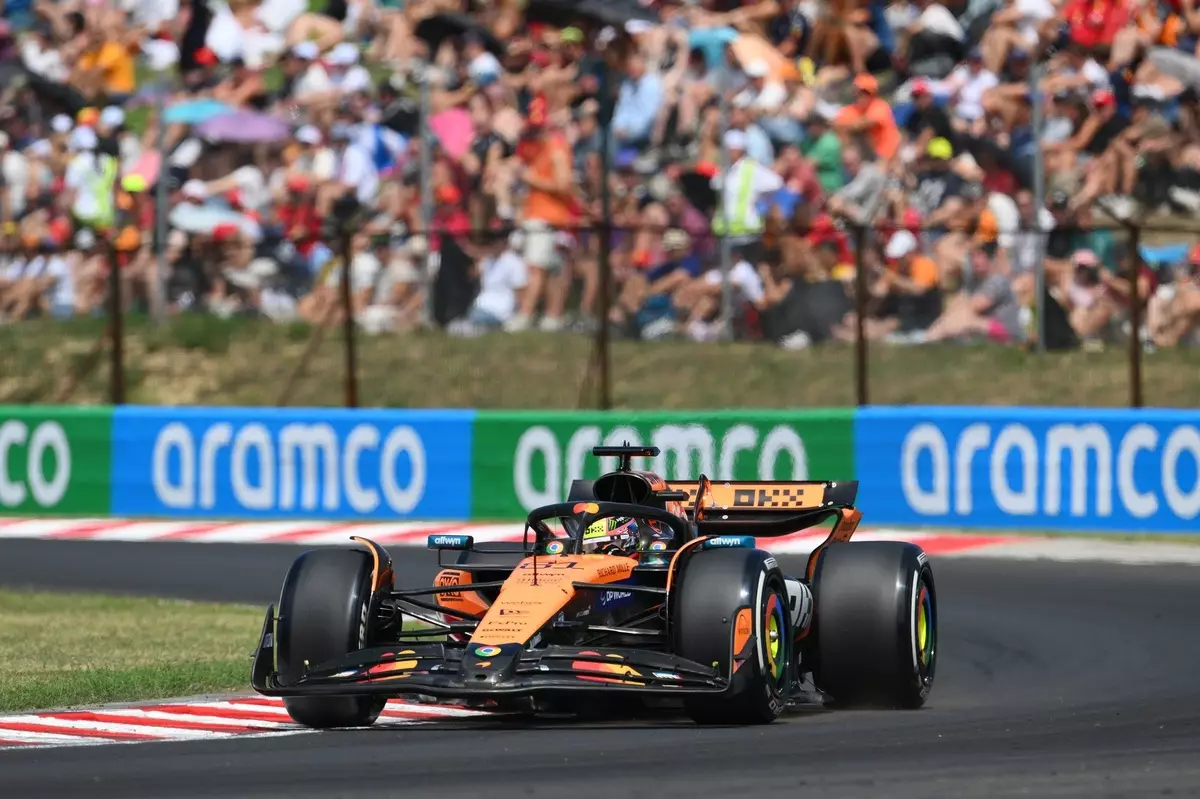In a stunning display of speed and strategic prowess, Oscar Piastri outpaced his rivals in the final practice of the Hungarian Grand Prix, signaling a potential shift in competitive balance. This session was more than just a warm-up; it was a declaration that McLaren is eager to assert itself as a genuine contender. Piastri’s late surge on fresh soft tires, culminating in a blistering 1m14.916s, was not merely about setting a fast lap—it was about sending a message to the rest of the field: McLaren is back and ready to challenge for front-row honors. His performance was characterized by calculated risk-taking, leveraging new tires at the optimal moment, which proved to be decisive.
What makes this achievement more remarkable is the context in which it occurred. It was a deliberate and confident push during the waning moments of the session, rather than a hesitant dabbling during early runs. Piastri’s timing and execution indicated he and his team had crafted a clear strategy to maximize performance when it mattered most. The fact that he was able to improve his own time by over 0.9 seconds on a single lap demonstrates a level of control and confidence that signals serious intent for qualifying sessions ahead. McLaren’s demonstration of speed isn’t just a fleeting moment; it could spell a new chapter in their quest to challenge the dominant Red Bulls and the resurgent Ferrari forces.
McLaren’s Bold Strategy: A Disruption to the Status Quo
The mere fact that McLaren managed to secure the top two spots in final practice signals a potential upheaval in the traditional pecking order. Historically, Red Bull and Ferrari have often carved out the frontrunners’ positions, with Mercedes occasionally breaking through with strategic brilliance or driver talent. McLaren’s resurgence throws a wrench into those established narratives, emphasizing their confidence in both car performance and race strategy.
While Piastri’s lap stole headlines, Lando Norris’s near-miss, trailing by just over a tenth, reinforced the team’s overall strength. Norris is known for his consistency and racing intelligence, and seeing him right behind Piastri keeps the team’s momentum intact. Their combined pace suggests McLaren isn’t merely an upset outsider but a genuine force that could jeopardize Red Bull’s dominance.
This scenario is invigorating because it reflects a broader shift: teams are no longer solely relying on established powerhouses to dictate the rhythm of the championship. McLaren’s performance underscores a strategic paradigm that prioritizes agility, driver confidence, and technological innovation. It’s an bold indicator that in F1, staying on top requires constant adaptation and relentless ambition. McLaren’s unexpected rise should be viewed not as a temporary anomaly but as a sign of a more competitive and unpredictable season ahead.
The Chasm Between the Front Runners and the Rest
While McLaren’s brilliance took center stage, the session also highlighted the ongoing struggles of other teams. Ferrari, often viewed as an enduring contender, seemed to be fighting to keep pace, with Charles Leclerc finishing third yet a fair margin behind the pace-setters. The gap between McLaren’s top-tier performance and the rest underscores a chasm in competitiveness this weekend. Such disparities suggest that teams are still grappling with car balance, tire management, and setup strategies.
Meanwhile, Red Bull’s performance was mixed. Max Verstappen, a driver renowned for his consistency, was only sixth on the timesheet, a puzzling outcome for a team that has historically dominated in practice. Yuki Tsunoda’s disappointingly low 19th place indicates Red Bull’s current struggles with overall balance, which could become a critical weakness if not addressed promptly. This inconsistency lends credence to the idea that the field is more open than previously perceived, with opportunities for teams like McLaren and Ferrari to capitalize on Red Bull’s vulnerabilities.
The practice session, therefore, became a microcosm of the shifting landscape of Formula 1. It showcased the rise of innovative strategies and new talent, while also exposing the fragility and transitional phase many teams are experiencing—an exhilarating prospect for fans hungry for unpredictability. The performance disparities hint at a season where the margins for victory are tighter, and every session will be fiercely contested. As McLaren seizes this moment, the other teams must reevaluate their approach, lest they fall behind in a sport that is increasingly defined by ingenuity and daring.

